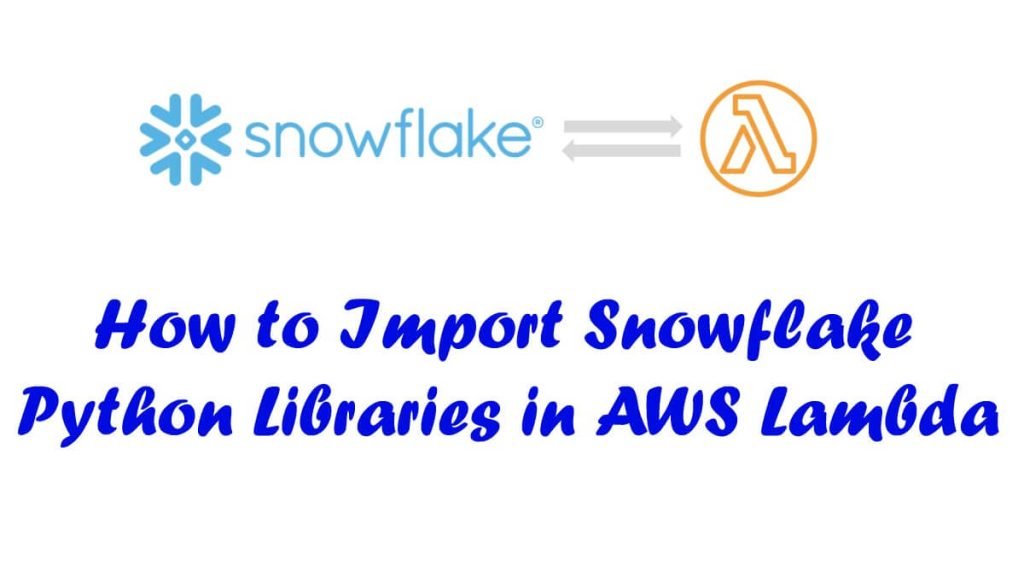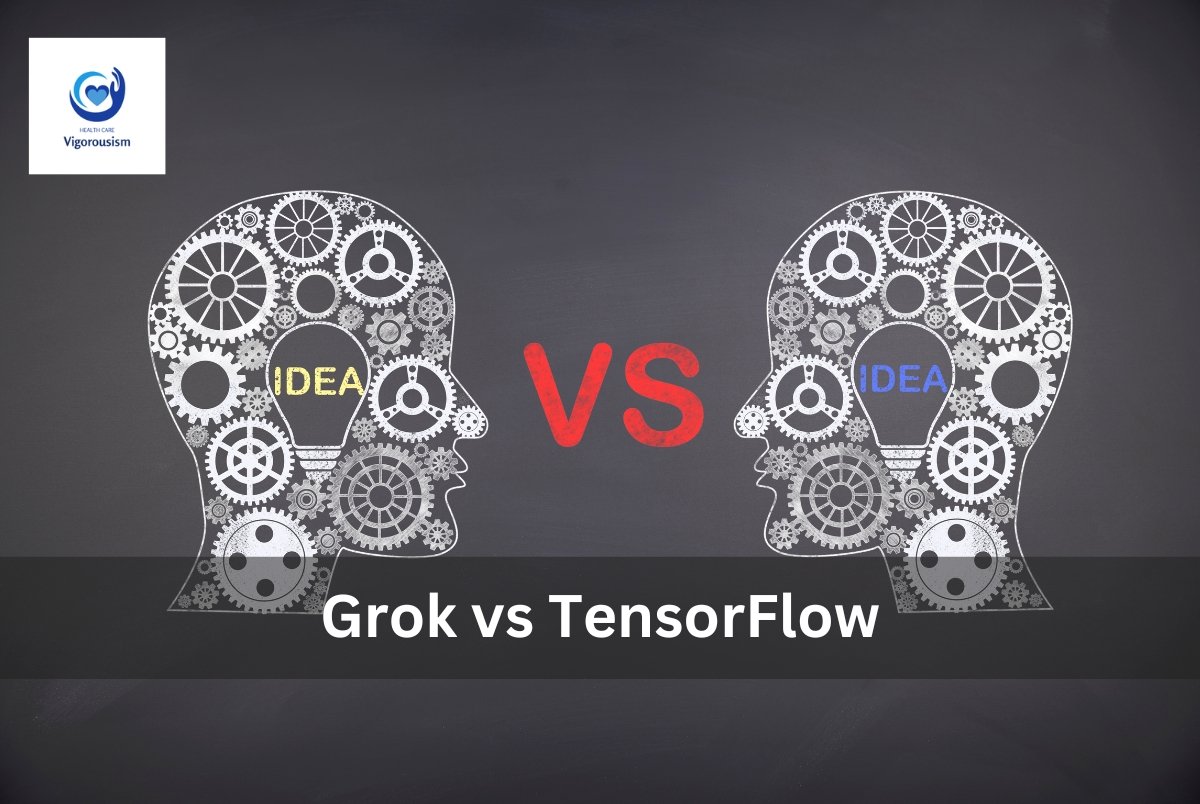How to Import Snowflake Python Libraries in AWS Lambda! In today’s digital age, cloud computing has become an essential part of businesses, offering scalability, flexibility, and cost-efficiency. AWS Lambda, a serverless compute service provided by Amazon Web Services (AWS), allows developers to run their code without the need to provision or manage servers. Snowflake, on the other hand, is a cloud-based data warehousing platform that provides a scalable and secure solution for handling large volumes of data. In this article, we will discuss how to import Snowflake Python libraries in AWS Lambda, enabling you to leverage the power of Snowflake within your serverless environment.
Overview of Snowflake and AWS Lambda
What is Snowflake?
Snowflake is a cloud-based data warehousing platform that offers high scalability, performance, and security. It allows organizations to store and analyze large volumes of structured and semi-structured data. Snowflake’s architecture separates storage and compute, enabling users to scale resources independently, resulting in optimized performance and cost-effective solutions.
What is AWS Lambda?
AWS Lambda is a serverless compute service that lets you run your code without provisioning or managing servers. It automatically scales your applications in response to incoming requests, ensuring high availability and cost optimization. With AWS Lambda, you only pay for the compute time that you consume, making it a cost-efficient solution for running code in the cloud.
Setting up the Snowflake Python Connector
To import Snowflake Python libraries in AWS Lambda, you need to set up the Snowflake Python Connector. The connector allows your Lambda function to interact with the Snowflake data warehouse.
- Install the Snowflake Python Connector by running the following command:
shellCopy codepip install snowflake-connector-python
- Import the Snowflake Connector in your Python script using the following statement:
pythonCopy codeimport snowflake.connector
Creating an AWS Lambda Function
Now that you have the Snowflake Python Connector installed, you can proceed to create an AWS Lambda function.
- Open the AWS Management Console and navigate to the AWS Lambda service.
- Click on “Create Function” to start the function creation process.
- Choose a function name, runtime (Python), and create a new execution role.
- Click on “Create function” to create the AWS Lambda function.
Importing Snowflake Libraries in AWS Lambda
To import Snowflake libraries in your AWS Lambda function, you need to include the Snowflake Python Connector in your deployment package.
- Create a new folder on your local machine to store the AWS Lambda deployment package.
- Copy the
snowflakefolder from the installed Snowflake Python Connector to your deployment package folder. - Include the
snowflakefolder in your AWS Lambda deployment package. - Upload the deployment package to AWS Lambda.
Configuring Snowflake Credentials
To connect to Snowflake from your AWS Lambda function, you need to configure your Snowflake credentials. This includes providing the account URL, username, password, and warehouse details.
- Retrieve your Snowflake account URL, username, password, and warehouse details from the Snowflake web interface.
- Store the Snowflake credentials securely using AWS Secrets Manager or AWS Parameter Store.
- In your AWS Lambda function, retrieve the Snowflake credentials from the secrets manager or parameter store.
- Use the retrieved credentials to establish a connection to Snowflake within your AWS Lambda function.
Executing Snowflake Queries in AWS Lambda
With the Snowflake Python Connector imported and the credentials configured, you can now execute Snowflake queries in your AWS Lambda function.
- Write the Snowflake query that you want to execute within your AWS Lambda function.
- Establish a connection to Snowflake using the Snowflake Python Connector.
- Execute the Snowflake query using the established connection.
- Process the query results within your AWS Lambda function as required.
Handling Snowflake Errors and Exceptions
When working with Snowflake in AWS Lambda, it’s essential to handle errors and exceptions effectively to ensure the smooth execution of your function.
- Implement error handling logic within your AWS Lambda function to capture Snowflake-specific errors.
- Use try-except blocks to catch exceptions raised during the execution of Snowflake queries.
- Handle different types of errors, such as connectivity issues, query errors, or data-related errors.
- Log the errors to a centralized logging solution for monitoring and troubleshooting purposes.
Testing and Deploying the AWS Lambda Function
Once you have implemented the Snowflake integration in your AWS Lambda function, it’s crucial to test and deploy it.
- Write test cases to verify the functionality of your AWS Lambda function.
- Use the AWS Lambda test environment to test your function with different inputs.
- Analyze the test results and address any issues or bugs.
- Once your AWS Lambda function is tested and working correctly, deploy it to your production environment.
Monitoring and Troubleshooting Snowflake in AWS Lambda
To ensure the smooth operation of your AWS Lambda function with Snowflake integration, monitoring and troubleshooting are essential.
- Set up monitoring and logging for your AWS Lambda function using AWS CloudWatch.
- Monitor the function’s invocation metrics, error rates, and execution duration.
- Configure alarms to notify you of any performance or error-related issues.
- Use the logs to analyze and troubleshoot any errors or unexpected behavior.
Conclusion
In conclusion, integrating Snowflake Python libraries in AWS Lambda enables you to leverage the power of Snowflake within a serverless environment. By following the steps outlined in this article, you can import Snowflake libraries, configure the necessary credentials, execute Snowflake queries, handle errors, and deploy and monitor your AWS Lambda function effectively. This integration allows you to process large volumes of data in a scalable and cost-efficient manner.

FAQs About How to Import Snowflake Python Libraries in AWS Lambda
Can I use Snowflake Python libraries in AWS Lambda with other programming languages?
No, Snowflake Python libraries can only be used with Python. AWS Lambda supports various programming languages, but the Snowflake Python Connector is specifically designed for Python-based applications.
Does using Snowflake Python libraries in AWS Lambda incur additional costs?
Using Snowflake Python libraries in AWS Lambda does not incur any additional costs. However, keep in mind that both Snowflake and AWS Lambda have their own pricing models based on usage and resources consumed.
Can I import custom Python libraries in AWS Lambda along with Snowflake libraries?
Yes, you can import custom Python libraries in AWS Lambda along with Snowflake libraries. Ensure that you include all the necessary dependencies in your deployment package.
Can I schedule AWS Lambda functions to run Snowflake queries at specific intervals?
Yes, you can schedule AWS Lambda functions to run Snowflake queries at specific intervals using AWS CloudWatch Events. You can configure cron expressions to define the schedule for your function invocations.
Is it possible to use AWS Lambda functions with Snowflake for real-time data processing?
Yes, AWS Lambda functions can be used with Snowflake for real-time data processing. You can trigger your AWS Lambda function based on various events or integrate it into a streaming pipeline for continuous data processing.


